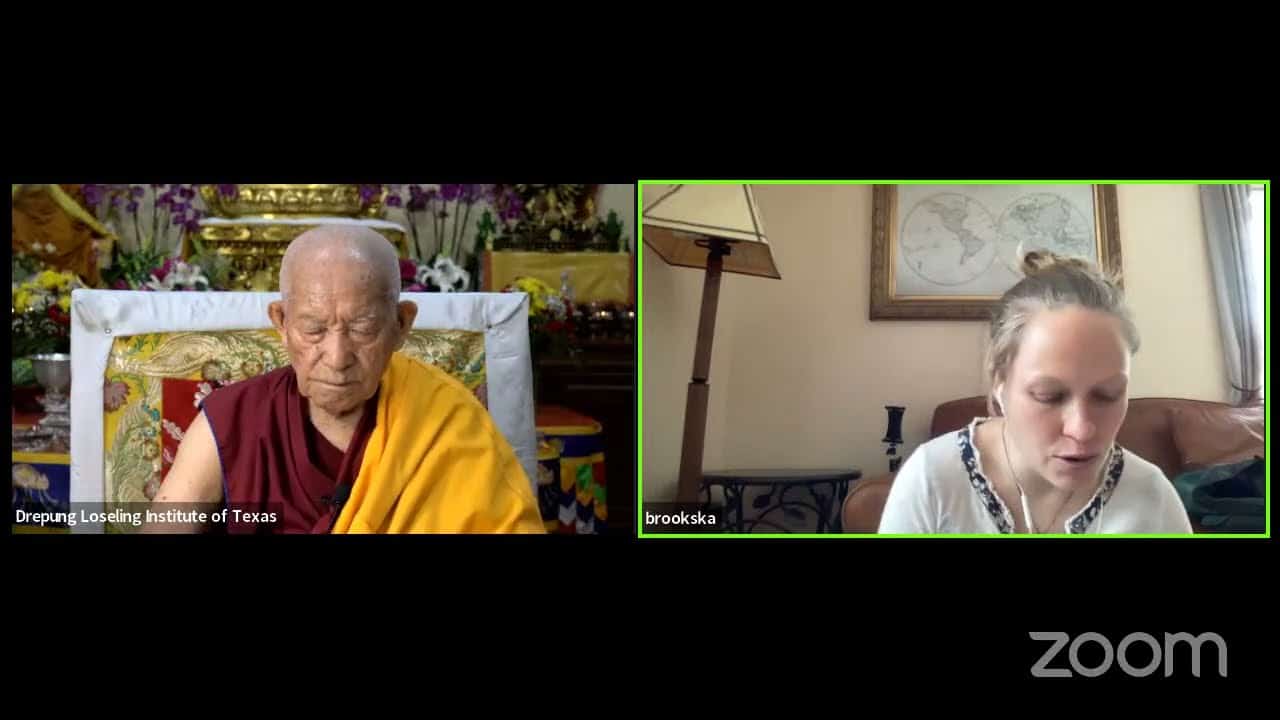Aging or death
59 Samsara, Nirvana, and Buddha Nature
Part of an ongoing series of teachings (retreat and Friday) based on the book Samsara, Nirvana, and Buddha Nature, the third volume in The Library of Wisdom and Compassion series by His Holiness the Dalai Lama and Venerable Thubten Chodron.
- Collective karma and individual karma
- Body and mind under the influence of afflictions and karma
- Two ways of describing aging
- How death causes continuation of ignorance
- Various forms of duhkha between aging and death
- Examining the unsatisfactory sequence of the 12 links
- Benefits of meditating on the 12 links
- Different explanations of how the 12 links operate
- Links grouped in terms of afflictions, karma, duhkha
- Projecting causes and projected effects, actualizing causes and actualized effects
Samsara, Nirvana, and Buddha Nature 59: Aging or Death (download)
Contemplation points
- Consider that aging and death are the result of birth. There is nothing wrong with them, rather this is simply the natural process. However, other religions and views may teach that sickness and death are punishments. What are sickness and death from the Buddhist worldview?
- Are you contemplating your own death every day? Why or why not?
- Do you have fear with regard to death and dying? What are they? How might you go about overcoming those fears?
- Spend some time contemplating each of the events we experience between aging and death: lamentation, sorrow, not getting what we seek, being separated from what is dear, encountering and being forced to endure what we do not like, being disillusioned when events do not occur as wished, and being unable to control the experiences and events we encounter in life. Do you have resistance to thinking of these things? Why do you think that is? What conclusions are we to draw from these meditations?
- Explain in your own words why the dukkha of pervasive conditioning is the underlying basis for the first two forms of dukkha.
- Beginning with ignorance, slowly contemplate each link and investigate, making examples of each: What is the nature or meaning of this link? What is its function? What is its cause? How is it related to the preceding link? What is its result? How is it related to the subsequent link? What is the antidote that will stop this link?
- What are the benefits of studying the twelve links and how they produce our situation in samsara?
Venerable Thubten Chodron
Venerable Chodron emphasizes the practical application of Buddha’s teachings in our daily lives and is especially skilled at explaining them in ways easily understood and practiced by Westerners. She is well known for her warm, humorous, and lucid teachings. She was ordained as a Buddhist nun in 1977 by Kyabje Ling Rinpoche in Dharamsala, India, and in 1986 she received bhikshuni (full) ordination in Taiwan. Read her full bio.


